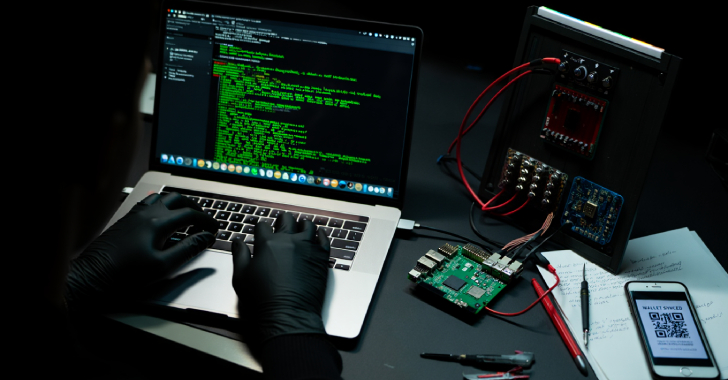
Cyber Policy Management for Quantum Encryption Paradigms
The rapid advancement of technology has brought us to the cusp of a quantum revolution. Quantum computing, with its unparalleled processing power, has the potential to disrupt the entire landscape of cybersecurity. As we embrace the quantum era, it becomes increasingly vital to establish robust cyber policy management frameworks capable of handling the challenges and opportunities that quantum encryption paradigms present.
The Quantum Threat Landscape
Quantum computing, often heralded as the next frontier in computational power, promises to solve complex problems that are currently beyond the capabilities of classical computers. While this is a remarkable achievement in the world of science and technology, it also poses a significant threat to existing encryption methods. Classical encryption, which relies on mathematical problems that are hard for classical computers to solve, could become vulnerable to quantum attacks.
Shor’s algorithm, a quantum algorithm developed by mathematician Peter Shor, has the potential to factor large numbers exponentially faster than the best-known classical algorithms. This means that widely used encryption methods like RSA and ECC (Elliptic Curve Cryptography) may no longer provide the security they once did when confronted with quantum computing.
As the quantum threat looms larger, organizations, governments, and individuals must take proactive measures to protect sensitive data from future quantum attacks. This necessitates the development of robust cyber policy management strategies that account for the transition to quantum-safe encryption.
Quantum-Safe Encryption
Quantum-safe encryption, also known as post-quantum or quantum-resistant encryption, refers to encryption algorithms and methods that are designed to remain secure even in the presence of powerful quantum computers. These encryption techniques leverage mathematical problems that are believed to be hard for quantum computers to solve efficiently.
Some notable examples of quantum-safe encryption techniques include lattice-based cryptography, code-based cryptography, and multivariate polynomial cryptography. These cryptographic methods provide a crucial line of defense against the potential threat posed by quantum computing.
The Role of Cyber Policy Management
Effective cyber policy management is pivotal in navigating the quantum encryption paradigm shift. It encompasses the development, implementation, and enforcement of policies that govern how organizations and governments protect their data and communication in a quantum era. Here are some key considerations for a robust cyber policy management framework in the context of quantum encryption paradigms:
- Assess Quantum Vulnerabilities
To build a strong defense, organizations and governments must first understand their vulnerabilities in the face of quantum computing. This involves evaluating their existing encryption systems and identifying potential weak points that could be exploited by quantum attacks. Once these vulnerabilities are identified, organizations can begin the process of transitioning to quantum-safe encryption methods.
- Invest in Research and Development
Investment in research and development is crucial for staying ahead in the quantum encryption game. Governments should allocate resources to support the development of quantum-resistant encryption techniques and promote collaboration between public and private sectors in this area. Furthermore, organizations should stay informed about the latest advancements in quantum-safe encryption and be prepared to adopt them when they become available.
- Implement Quantum-Safe Encryption
Transitioning to quantum-safe encryption is not a one-size-fits-all process. Organizations should carefully assess their encryption needs and choose quantum-safe encryption methods that align with their specific requirements. This may involve upgrading existing systems or adopting entirely new encryption solutions.
- Establish Quantum Key Distribution (QKD)
Quantum Key Distribution (QKD) is a cutting-edge technology that uses the principles of quantum mechanics to secure communication channels. It allows for the creation of encryption keys that are immune to quantum attacks. Governments and organizations should explore the implementation of QKD to enhance the security of their communication networks.
- Develop Contingency Plans
While transitioning to quantum-safe encryption is essential, it’s also important to have contingency plans in place. Organizations and governments should prepare for the possibility of a quantum attack on their existing encryption systems. This includes having backup strategies and recovery plans to minimize the impact of a successful quantum attack.
- Educate and Train
Cybersecurity is only as strong as the people who implement it. It’s crucial to invest in education and training programs to ensure that employees and stakeholders are well-informed about quantum threats and best practices for quantum-safe encryption. Awareness and training can significantly reduce the risk of human error in cybersecurity.
- Regularly Update Policies
The quantum threat landscape is continually evolving. Cyber policy management frameworks must be agile and adaptable to stay relevant. Policies should be regularly reviewed and updated to incorporate the latest developments in quantum technology and encryption methods.
International Cooperation
The quantum threat is not limited by borders, and its implications are global. As such, international cooperation is vital in addressing the challenges posed by quantum computing. Governments and organizations must collaborate on setting international standards for quantum-safe encryption, sharing threat intelligence, and coordinating efforts to protect critical infrastructure.
The European Union’s Quantum Flagship program, for instance, is an example of international collaboration aimed at advancing quantum technologies and ensuring the security of communication in the quantum era. Similar initiatives should be encouraged and supported on a global scale.
Conclusion
The advent of quantum computing heralds a new era in technology, but it also brings with it unprecedented challenges to cybersecurity. Quantum encryption paradigms are essential to safeguard sensitive data and communication in this quantum era. Robust cyber policy management is the linchpin that will enable organizations and governments to navigate this transition successfully.
By assessing vulnerabilities, investing in research and development, implementing quantum-safe encryption, establishing Quantum Key Distribution, developing contingency plans, educating stakeholders, and fostering international cooperation, we can fortify our defenses against quantum threats and ensure a secure digital future. The time to act is now, as quantum computing continues its inexorable march toward becoming a reality.
Contact Cyber Defense Advisors to learn more about our Cyber Policy Management solutions.





